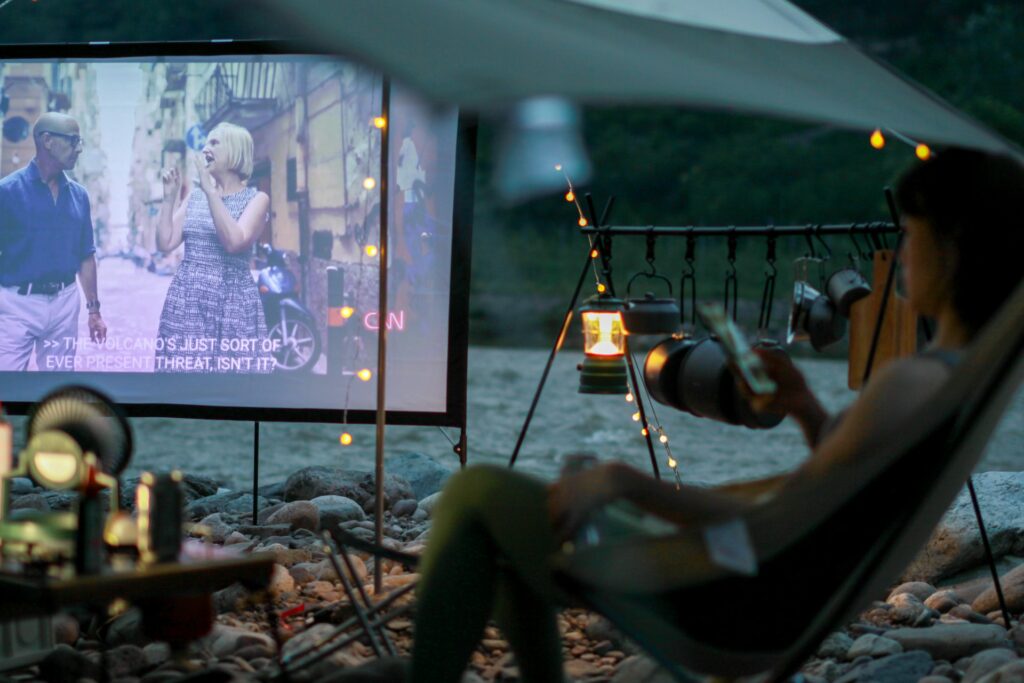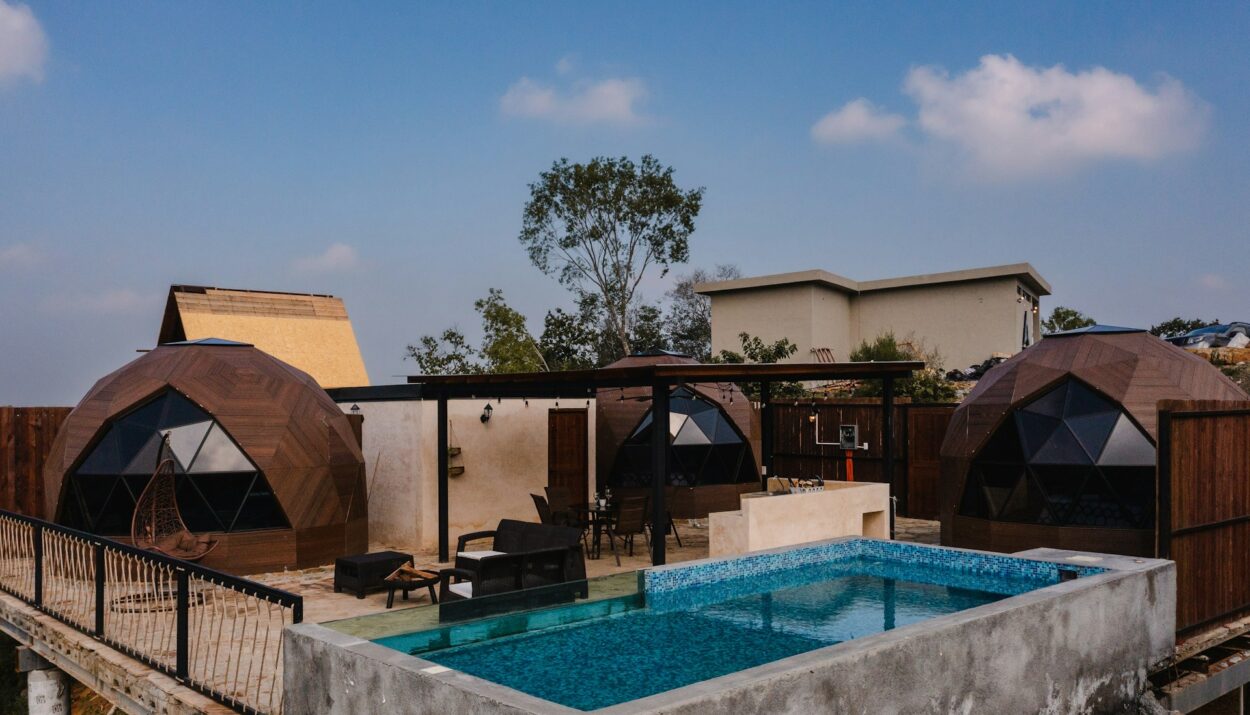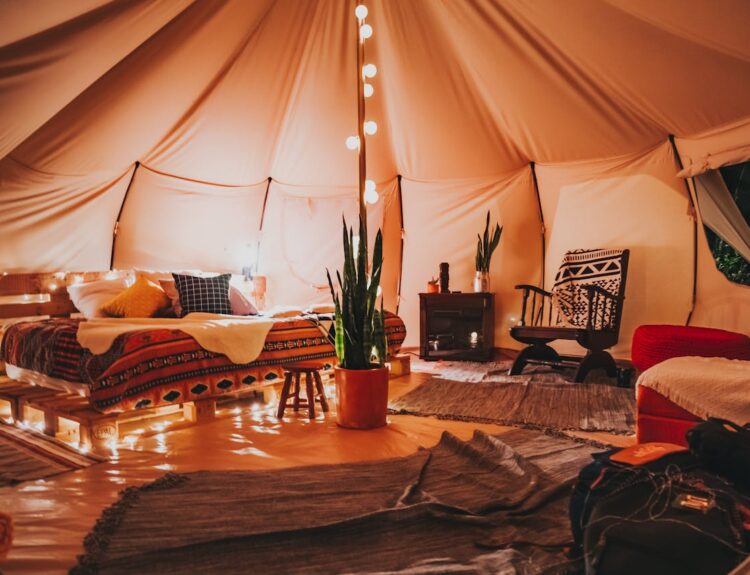The RV park industry has long been a staple of outdoor hospitality, providing a home away from home for travelers seeking adventure with their recreational vehicles. However, the glamping trend—offering a more luxurious and unique outdoor experience—has taken off recently. Expanding your RV park into glamping can be a lucrative move, allowing you to attract a broader customer base and elevate your offerings.
But how do you make this transition successfully? This post will guide you through the key steps and considerations necessary for expanding your RV park into glamping.
Understanding the Glamping Opportunity
The Growing Demand for Glamping
The glamping market has exploded recently, driven by consumers looking for outdoor experiences without sacrificing comfort. As RV parks compete in an increasingly market, adding glamping accommodations can provide a unique value proposition. It can also diversify your revenue streams by It can also diversify your revenue streams by attracting travelers who don’t own RVs but still want to enjoy the great outdoors in comfort. Plus, it offers an ideal solution for guests seeking a mix of both—such as a family with grandparents who prefer the comfort of a cabin while others enjoy traditional camping.
By offering luxurious yurts, cabins, or safari tents, you can appeal to families, couples, and solo travelers looking for a memorable stay. Glamping also tends to attract eco-conscious travelers and millennials, both of whom are looking for more experiential travel.
The Shift Toward Luxury in the RV Industry
Recent research from the Modern Campground Hospitality Highlights report reveals a significant shift in the preferences of RV travelers. According to the “State by State: A Look at RV Park Search Volume and Where Demand is Headed,” while the overall volume of searches for RV parks has declined by 12%, there has been an 18% increase in interest in luxury RV parks. This trend aligns perfectly with the rise of glamping, as travelers are seeking more upscale and comfortable outdoor experiences.
Scott Bahr, president of Cairn Consulting Group, noted, “Our research highlights a pivotal shift in the RV industry. While the overall search volume has decreased, the demand for luxury and long-term RV parks is growing steadily. This trend signals a clear opportunity for campground owners to rethink and enhance their amenity offerings to attract contemporary RV travelers.”
In regions like the Midwest, searches for luxury RV accommodations have skyrocketed by 64%, further emphasizing the growing demand for high-end outdoor experiences. As a result, campground owners have a unique opportunity to differentiate their services by investing in premium amenities and glamping accommodations.

Benefits of Expanding Into Glamping
Adding glamping to your RV park can have several immediate and long-term benefits, including:
- Increased revenue: Glamping units typically command higher nightly rates than RV spots, boosting your overall profitability.
- Broader customer base: You’ll attract non-RV travelers, such as tourists, event-goers, or those looking for a one-of-a-kind vacation experience.
- Brand differentiation: Stand out from competing RV parks by offering upscale, Instagram-worthy accommodations.
- Year-round appeal: Glamping units can be equipped with heating and insulation, making them attractive even during off-peak seasons.
Key Steps to Expanding Your RV Park Into Glamping
Market Research and Feasibility Study
Before you make any financial commitments, conduct thorough market research. Understand the demand for glamping in your area, who your competitors are, and whether you can fill a gap in the market.
4 Questions to Consider:
- What are the popular glamping accommodations in your region?
- How much can you reasonably charge per night?
- What are your competitors offering?
- Are there any regulatory barriers to adding glamping units?
By completing a feasibility study, you can assess the financial, logistical, and operational requirements for your expansion.
Planning the Layout and Design of Glamping Accommodations
The design and layout of your glamping units will play a significant role in the customer experience. Glamping units vary widely, from safari tents and domes to treehouses and tiny homes. Consider how these structures will fit within your current RV park layout and how they’ll complement the natural landscape.
Considerations for Planning:
- Space: Ensure each glamping unit has enough space for privacy and scenic views.
- Infrastructure: Plan for electrical, water, and sewage hookups. Many glamping units require similar utilities as RVs, but they may also need additional considerations such as heating, lighting, and Wi-Fi.
- Amenities: Will your units have private bathrooms, kitchens, or outdoor fire pits? The level of luxury you offer will affect pricing and attract different types of guests.
Navigating Zoning and Permits
Just like when you first set up your RV park, expanding into glamping will require you to navigate local zoning laws and acquire the necessary permits. Some municipalities may have restrictions on what types of structures can be built, especially if you’re planning to add permanent units like cabins or treehouses.
Consult local authorities and check the building codes before investing in new accommodations. You may also want to speak with other park owners who have expanded into glamping to understand the regulatory hurdles.
Budgeting and Financing
Expanding into glamping is a financial investment, but it doesn’t have to be a strain on your resources. Once you have a clear idea of your expansion costs—including construction, permits, and utilities—you can develop a financial plan.
Key Budget Considerations:
- Initial investment: construction or purchase of glamping units, landscaping, and utility installation.
- Ongoing costs: maintenance, staffing, cleaning, and marketing for the new units.
- Return on investment (ROI): How long will it take for the increased revenue to cover your initial investment?
You might consider financing options such as small business loans or seeking investors if needed.

Operational Considerations for Glamping Expansion
Staffing and operational adjustments
Adding glamping units to your park may require operational changes, especially if the services or amenities differ significantly from what you offer for RV guests. Think about whether you’ll need to hire additional staff to manage the glamping units, particularly for cleaning, maintenance, and guest services.
If you plan to offer more upscale services, such as breakfast delivery, guided tours, or on-site concierge services, you’ll need to adjust your staffing and operational plans accordingly.
Marketing and Positioning Your New Offerings
Expanding into glamping means targeting a new audience, which requires a strategic marketing plan. While RV travelers may respond to one kind of messaging, glamping customers are often looking for luxury, uniqueness, and experiences.
Marketing strategies to consider:
- Targeted digital advertising: Use social media platforms like Instagram and Pinterest to showcase the beauty and luxury of your glamping accommodations.
- Partnerships with travel influencers: Reach a broader audience by partnering with influencers in the travel or ecotourism space.
- Content marketing: Create blog posts and videos that highlight the experiences and amenities your glamping accommodations offer. Use your website and email marketing to promote these offerings to your existing customer base.
Ensuring a Smooth Transition
Guest Experience and Feedback
As you begin offering glamping options, keep a close eye on guest feedback. This will help you refine the experience and address any issues that arise. Encourage your guests to leave reviews online, and be sure to monitor feedback on platforms like Google, TripAdvisor, or your booking engine.
Use feedback to continually improve, whether it’s by adjusting the layout of units, adding new amenities, or training staff to better serve glamping guests.
Measuring success and making adjustments
Finally, once your glamping units are up and running, measure your success through key performance indicators (KPIs). This might include occupancy rates, guest satisfaction scores, and ROI on your initial investment. Regularly reviewing these metrics will allow you to adjust pricing, marketing, or operations as needed to maximize profitability.
KPIs to Monitor:
- Occupancy rates compared to RV spots
- Average revenue per glamping guest
- Online guest satisfaction ratings
- Return on investment timeline
By keeping a close eye on these metrics, you can ensure that your expansion into glamping is successful and sustainable.

Frequently Asked Questions
1. How much does it cost to add glamping accommodations to an RV park?
The cost can vary widely depending on the types of glamping units, utilities, and amenities you choose to offer. A basic safari tent may cost a few thousand dollars, while a luxury cabin could cost significantly more. It’s important to factor in infrastructure and ongoing maintenance as well.
2. Do I need special permits to add glamping units?
Yes, in most areas, you will need to obtain zoning approvals and building permits for glamping units. Consult your local zoning office to understand the requirements in your area.
3. What types of glamping accommodations are most popular?
Popular glamping accommodations include safari tents, yurts, domes, tiny homes, and treehouses. The right choice for your park will depend on your location, budget, and target market.
4. How can I market my new glamping accommodations?
Use a mix of digital marketing strategies, including social media, content marketing, and partnerships with travel influencers. High-quality photos and videos are essential to showcasing the unique experience that glamping offers.
5. How long does it take to see a return on investment?
The ROI timeline will depend on your initial investment, pricing, and occupancy rates. Typically, glamping accommodations offer higher nightly rates than RV spots, so the ROI can be quicker if you maintain strong occupancy.
Want more insights? Learn more about increasing profitability in your outdoor hospitality business by reading our blog!






